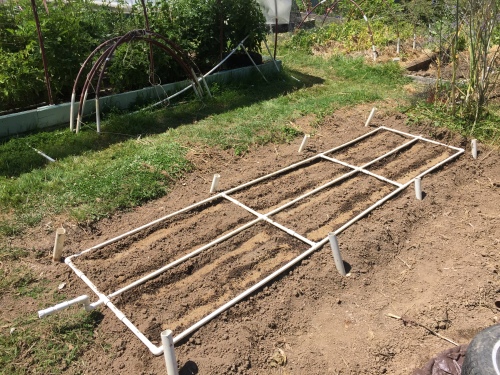
Our bicycles are nothing fancy, but they work to get us to the grocery store or post office, a distance of about three miles round trip.
Riding a bicycle for errands is a “win, win, win!” We don’t pollute, we don’t use gasoline, and we get some exercise…gets the cardiovascular circulation going. Of course we use the bicycle to get groceries and other items like crab shells and coffee grounds, too. Occasionally I’ll even deliver print jobs from a printer I know. A few years ago someone on NPR said he was trying to cut down on his carbon footprint by not driving at least one day a week. We thought that was a great idea, so in 2006 we set out to get at least 51 days without using a car.
The following are the totals of “Car-free days” per year and rainfall totals.
2006 59/365=16.2% No rainfall report.
2007 76/365=20.8% No rainfall report.
2008 134/366=36.6% No rainfall report.
2009 144/365=39.5% Total rainfall 49.27 inches (1251 mm) Avg. rainfall 64.41 inches.
2010 153/365=41.9% Total rainfall 66.1 inches (1679 mm) Avg. rainfall 64.43 inches.
2011 186/365=50.1% Total rainfall 39.16 inches (994 mm) Avg. rainfall 64.91 inches.
2012 162/366=44.3% Total rainfall 54.89 inches (1394 mm) Avg. rainfall 64.57 inches.
2013 149/365=40.8% Total rainfall 29.5 inches (749 mm) Avg. rainfall 64.57 inches. (Footnote: 2013 is driest year on record)
2014 183/365=50%. HOORAY!! 50% Car-free days, and that’s with 18″ more rainfall this year. Total rainfall is 47.58 inches (1233 mm) Avg. rainfall is 64.57 inches.
2015 180/365=49.3%. I couldn’t quite get my 50% car-free days. Rainfall for 2015 is 44.89 inches (1140 mm)
As you can see 2011 was our best year at 50.1%. That works out to be 3.5 car-free days a week. Rainfall was comparatively low that year, so it was easier to get around. The next year I started beekeeping so the numbers have dropped a bit since I started attending bee meetings, hanging bait hives, and chasing down swarms.

I’m proud of my home-made bicycle sign. I figure if I can make drivers smile, they won’t run over me. I’ve gotten many comments on this sign, but the best one was from a man who said he dialed the number and his wife answered. 🙂

Lumber loaded on bicycle trailer, barely clears ground.
I can’t remember what this lumber was for, but my little Burley Flat Bed trailer was able to get it (and me) home in one piece.
The point of car-free days is to try to limit our carbon footprint. We live in a small town so it’s easy for us to bicycle. If we lived in a large city with public transportation, we would use it. We feel that it’s important to cut down on our energy usage (and pollution) as much as possible.
Just for the record I want to add the totals from my little solar system…
12-31-13…..5139 Total Kilowatt hours produced from start up in June 2009
12-31-12…..3915 Total Kilowatt hours produced from start up in June 2009
1224 Kilowatt hours produced Jan. 1, 2013 to Dec. 31, 2013
12-31-13…..188.1 Total kilo-amp hours produced from start up in June 2009
12-31-12…..143.2 Total kilo-amp hours produced from start up in June 2009
44.9 Kilo-amp hours produce Jan. 1, 2013 to Dec. 31, 2013
1-1-14…..Zero’d out the meter today.
12-31-14…..45.6 Kilo-amp hours produced Jan. 1, 2014 to Dec. 31, 2014
12-31-15…..48.6 Kilo-amp hours produced Jan. 1, 2015 to Dec. 31, 2015
12-31-15…..1,320 Kilo wt hours produced Jan. 1, 2015 to Dec. 31, 2015
12-31-15…..Note to Pat…Did NOT zero out meter…Didn’t remember code. 😦
Read Full Post »


















































